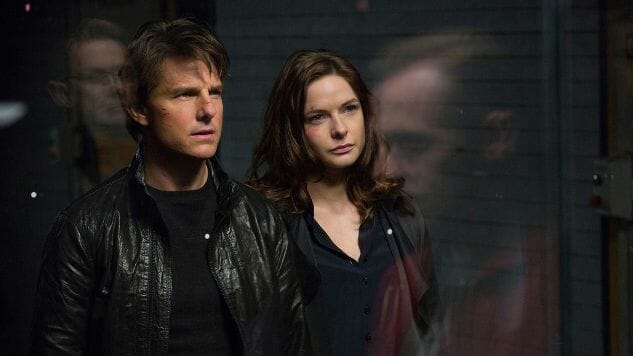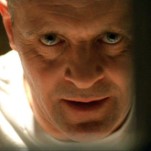4K to the Future: The Early Death and Amazing Resurgence of Mission: Impossible

I was sure the Mission: Impossible series died in 2000, killed off after only two movies by John Woo’s terrible Mission: Impossible 2. A movie ostensibly about a team of super spies somehow became a one-man show, with Tom Cruise dominating the screen in a way he didn’t quite do in Brian De Palma’s twisty original, despite most of that team getting killed off in the first twenty minutes. Mission: Impossible 2 jettisoned the entire concept of the series, saddled itself with a charisma-less void of a villain (played by would-be Wolverine Dougray Scott), and ended with an extended bird-filled set piece that felt like a parody of a John Woo action movie. I walked out of that theater in 2000 assuming the movie would collapse at the box office after word of mouth got out. Instead it became the highest grossing movie of the year, raking in over half a billion dollars worldwide at a time when movies rarely did that.
Mission: Impossible 2 didn’t kill the series, but it did kill my interest in it. Despite liking the directors behind them, and despite the increasingly positive reviews, I skipped the next three sequels as they came out over the next 15 years. The hole dug by M:I 2 (as the marketing campaign obnoxiously nicknamed the movie) was too deep for J.J. Abrams or Brad Bird or Christopher McQuarrie to pull the series out of. You’d have to be an impossibly talented alpha human like Ethan Hunt to pull that stunt off, I thought.
And then this happened. I somehow became hooked on watching movies at home on a fancy 4K Ultra HD set-up. It’s a nightly compulsion that I have to keep feeding, which means finding new movies to watch all the time. And with the current library of 4K Blu-rays being fairly skimpy, that means loading up some movies I thought I’d never watch—movies I was pointedly avoiding, even.
All five Mission: Impossible movies were released on 4K UHD at the end of June, timed to hit shelves just a few weeks before the release of the sixth movie in the series (reviewed here, and out in theaters today). As a legitimate fan of De Palma’s first movie, and with an insatiable thirst for new stuff to slap into that 4K player, I got my hands on the full run and watched them all in a single week. They’re all crisp, gorgeous transfers that leave previous Blu-ray releases in the dust. At different points during this little marathon I was surprised and impressed and energized by the action blazing out of that TV every night in high-dynamic range color. During one excruciatingly long point, though, I was fully reminded of how horrible that second movie is; somehow John Woo, perhaps the most acclaimed action director of his era, made what is by far the worst Mission: Impossible, just a total leaden bore that might’ve killed this entire project early on if I didn’t already have the other three movies ready and waiting to go. Mission: Impossible 2 is still terrible, and that’s the last time you’re going to see its name on this page.
Beyond a certain almost fatal trainwreck early in its lineage, the Mission: Impossible movies could legitimately be the best action blockbuster series that Hollywood has ever cranked out (outside of the Spielberg-Lucas nexus). De Palma’s film has little in common with the three most recent installments, but all four are ideal popcorn entertainments, with great action pieces, amazing stunt work, stakes that feel appropriately high, and just enough intelligence to make them feel smarter than the typical Hollywood blockbuster.
J.J. Abrams immediately revives the franchise with the crackling in media res opening of the third film, with a menacing Philip Seymour Hoffman having a tense, deadly stand-off with Cruise. Abrams restores the group dynamic by bringing back Ving Rhames (the only actor to appear in every installment other than Cruise) and introducing new agents played by Keri Russell, Maggie Q, Jonathan Rhys Meyers and Simon Pegg. He also peels back the impenetrable front of Cruise’s Ethan Hunt just enough to add some human depth to the character. There’s a regrettable recurring motif of Hunt’s fiancé, played by Michelle Monaghan, being a constant victim and pawn that the villains use to manipulate Hunt, but fortunately the movie ultimately avoids the old Death Wish clichés. Mission: Impossible III doesn’t quite set the template for its two follow-ups—every director so far has brought something new and unique to the series—but it does point the franchise in the right direction, one focused more on teamwork and with the kind of twists that De Palma injected into the first movie.
-

-

-

-

-

-

-

-

-

-

-

-

-

-

-

-

-

-

-

-

-

-

-

-

-

-

-

-

-

-

-

-

-

-

-

-

-

-

-

-








































